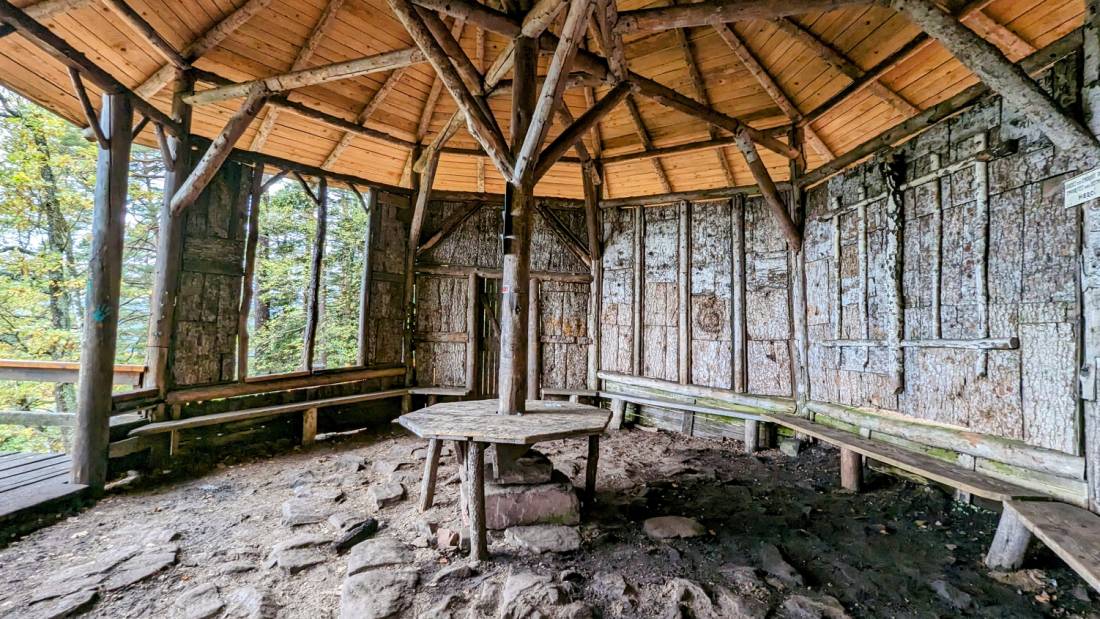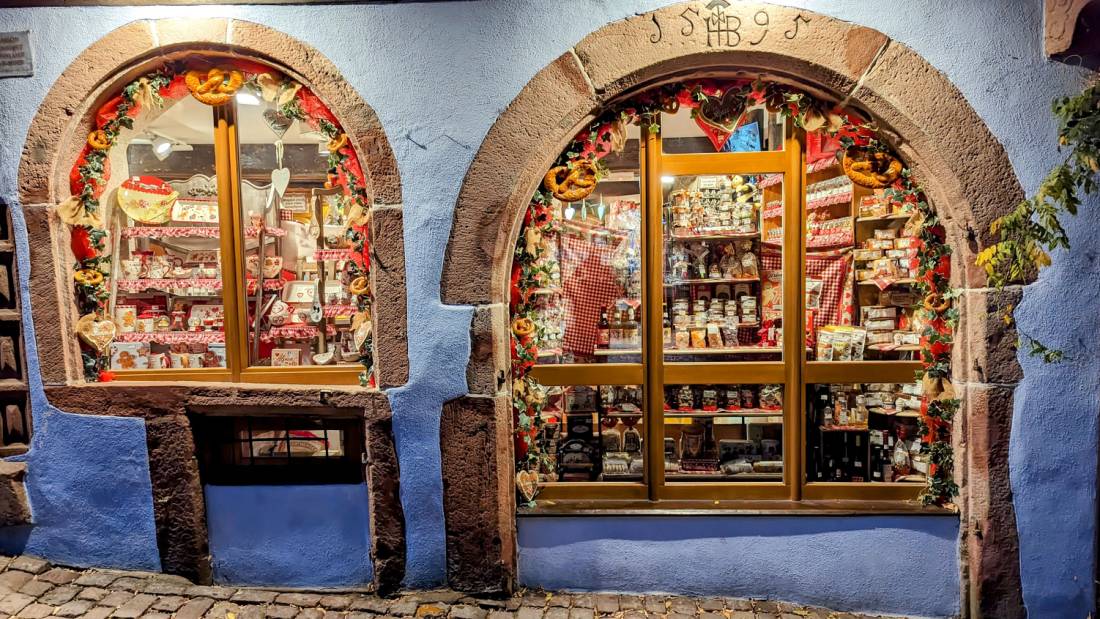Blog home / Guide to exploring Alsace – uncover a medieval fairytale
When you are told by a number of Walkers' Britain regulars that the Alsace Wine Route is the best walk they have ever done in France, it's hard not to pass up the opportunity to explore it.
I had been looking at this trip for some years and finally decided to see what this iconic journey through vineyards would entail.
One website declares that the Alsace region is the sunniest place in France, which became hard to believe as, on my departure, it was cloudy and rained most days! However, this did not detract from the beauty of the experience – a walk on the edge of the Vosges Mountains just to the west of the River Rhine.

What is it like walking the Alsace Wine Route?
The villages, castles and vineyards are an essential part of the walk and every day you leave the main Alsace Wine Route to take trails through beautiful mixed woodlands of oak, beech and chestnut.
The trails – even after a lot of rain – were pretty good underfoot as the soils are free-draining. The pattern of the walks can be quite similar each day: village – vineyard – forested hills – castle or abbey – vineyard and onto another village. When you dive in to the region's history, the place grows into something very fascinating.

There are a lot of historical information panels along the walk and most have a section or two in English. You discover interesting pasts, such as a visiting protestant preacher who was killed by a bear in the forest above Ammerschwihr and how one of the castles had started as a platform for a mediaeval catapult.
Mountains, vineyards & villages – a walk through history
The Vosges are low mountains that feature extensive caps of mixed forest fringed by aprons of vineyards, which are endemic to the area due to the rain-shadow effect created in the lee of the Vosges massif.
It is the place that all the wines my parents used to drink in the 1960s-1970s seemed to come from; back then Alsatian Reisling (as well as very bad Italian chianti in those straw-covered carafes) was just about the only wine easily available in the UK. I never really liked it so I was looking to be re-educated!
The area is very much a borderland, having been under the Germanic Holy Roman Empire for a thousand years before being ceded to France in 1648 after the Thirty Years War. Then it was given to Germany in 1871 after the Franco-Prussian War, then returned to France in 1918 after the First World War, back to Nazi Germany in 1939, and finally returned to France in 1945. The result of this territorial ping-pong is that to look at the area has more of the appearance of Germany, with Germanic architecture, German-style white wines, German-style beer making and shops selling a lot of sausages and yet most people speak French.
Every day you are reminded that conflict was never far away, most of the fortified places including most of the villages and even churches, were built in the thirteenth and fourteenth centuries, in the days of crossbows and catapults. By the 1630s, these structures could not withstand the advent of improved cannon and mortars. You pass the remains of improbably positioned castles on the hillsides; one day, there were three over a couple of square kilometres. One of them, Chateau Ramstein, was built to lay siege to the Chateau Ortenbourg nestled just above it.
Most of these places were destroyed by city-state medieval armies from areas such as Strasbourg or later by the French and Swedes in the Thirty Years War. Some of the villages you walk through, such as Ammerschwihr, were largely destroyed by the Nazis in 1944, but have been rebuilt. There are also fortified churches such as at Hunawihr and Chatenois, and nearly all the villages on the walk had curtain walls with crossbow loopholes and gothic towers, which originally had drawbridges.

Places on the Alsace Wine Route that survived the medieval period, became very wealthy with the growth of the wine and livestock trades. Some places built walls and drawbridges just to declare their wealth, which was often demonstrated in the ornate artisanal beauty of the homes as well as the castles or religious buildings.
So many layers of history are baked into these towns, all seem beautiful and two Riquewihr and Hunawihr are on the list of 'Les Plus Beaux Villages de France'. Riquewihr seemed to attract the most tourists and was quite crowded. With its colourful half-timbered houses, cobblestone streets and little alleys, it looked like a town straight out of a medieval fairytale.
There are some great local features to see while you are there, including the Fontaine de la Sinne, where winemakers gauged their barrels.
There are many places for wine degustation up and down the streets of most of the villages, but it is probably just as well to wait until the evening as you would generally have a few steep hills to climb during the day.
Where to stay in the Alsace region
The accommodation throughout the Alsace Vineyards Trail walking tour were of a high standard, and are generally small family hotels. The rooms, in most cases, were quite modern. A few had small pools although closed in October, and a couple had spas.
The stand-out accommodations were in Thannenkirch, Riquewihr and Andlau. Four of them had small restaurants which was handy if you didn’t want to go out in the evening.

Breakfasts were substantial continental with yoghurt, fruit, pastries, bread, cheese and meat slices. The hotels are no more than half a kilometre from the town centre. There were some very friendly people and a surprise was the eccentric pub in Chatenois called Le Darwin, which had local beer and stuffed animals including a 4-metre boa constrictor. There were mad preparations for Halloween and some cocktail tasters were even given for free.

Where to wine and dine for an Alsatian experience
The food noticeably has more than a touch of German about it. There are a lot of sausage-type dishes, soups and stews, while the region's version of coq au vin is, of course, coq au Riesling. I loved 'Flammkueche' or 'tarte flambée’, which is like a crispy thin-based pizza with toppings of white cheese or creme fraiche, and bacon and onions. It is, however, much less filling than an ordinary pizza.

And what about wines? These are very good. Buying a half bottle can be a good option if you don’t want to imbibe too much.
There are some lovely delicate floral and herby whites. One of the best I had was from the Gewurztraminer grape refreshing and described as ‘powerful, exotic, and very aromatic’. I appreciated that my wine came from ‘Domaine Sipp’ it seemed very appropriate. This certainly changed my mind about the regional wines.

Most ‘degustations’ in villages will charge for wine tasting or they will expect you to buy some bottles. On the sections of the Alsace Wine Route that you walk, you pass through many areas of ‘Grand Cru’, some of the highest quality wine-producing vineyards in the world. These Grand Cru if you want to look for them are: Brand, Sommerberg, Florimont, Wineck-Schlossberg, Kaefferkopf, Schlossberg, Schoenenbourg, Sporen, Rosacker, Geisberg, Osterberg, Praelatenberg, Frankstein, Winzenberg, Muenchburg, Moenchberg, Wiebelsberg and Kastelberg.

I appreciated the whole walking experience. It was truly different to many of the French walks I have been on, enjoying the great versatility throughout the journey, from farmland to mountain to gorge.
One thing is for certain, I will have to give the Alsatian wines another visitation.
Words by John Millen who travelled on the 7-day Alsace Vineyards Trail self-guided trip.